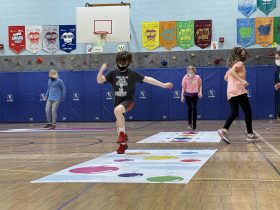
Indeed, the thinking of kids matters. When a student understands internalizes that his or her thinking matters a lot, his or her reading changes. The entire school days pass away with a lot of asking, answering, discussing, debating, arguing, responding and acquiring new knowledge. It is difficult to read the mind of child or student all through these processes in the school days, but one thing can be definitely done. That is, help the children or students to bring their thinking to the open platform of speaking or writing, or in other words, help the children to write or speak about what they think after reading. Get into Easy French Books to find the best books for your reading and comprehension.
In order to make someone write or speak about his or her thinking after a specific reading requires a process of comprehension and language of thinking. A reader must first understand his or her level or type of comprehension and then take care to develop to comprehend the language of thinking.
There are basically six types or level of comprehensions namely monitoring or monitor comprehension, activating and connecting, asking questions, infer and visualizing, determining the importance, and summarizing and synthesizing. A reader must monitor his or her comprehension while reading or listening or viewing. This helps the reader to keep a track of thinking. Monitoring further helps to distinguish between what the text about and what the thinking tells about. As a result, the reader can evaluate about his or her thinking and come to a conclusion on the thinking and the reading and decide whether his or her reading, as well as the thinking, has gone astray or meaningful.
The base in the thinking on the reading, on which the reader questions, answers, discusses, speaks or writes. Therefore, the thinking should be activated and connected to the text and the reader’s interactions. In order to comprehend, the reader must connect the new thinking with what he or she already knows.
Asking questions is the next level of comprehension that strengthens the thinking. As the readers ask a question or answer the question they eventually discover new information towards gathering more knowledge. The infer and visualize is the important segment of comprehension by which readers talk about what they already know merged with new information and coming up with mixed new information which may or may not has been told to them. This helps the readers get familiar with new words, work out conclusions, make predictions and create mental pictures of their thinking. Finally, the readers pass through the process of determining what is the important conclusion of their reading and summarise and synthesize the entire reading to their own thinking.








